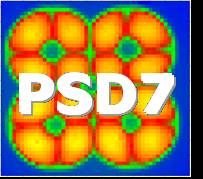Speaker
Dr
Jamil Mir
(CCLRC Rutherford Appleton Laboratory)
Description
Abstract: Experimental work was carried out to evaluate the
performance of a Gas Electron Multiplier (GEM) operated with a
Micromesh readout plane that enabled the induction gap to be set at
50 microns. We measured the essential operational parameters of this
system using Ar(75%)-isobutane (25%) as the counter gas mixture. The
measurements included the effective gain (signal-to-noise ratio),
effective gain stability, X-ray energy resolution and the risetime
of the detector output pulses using a 5.89 keV X-ray source. These
studies demonstrated several advantages of the current system such
as lower operational voltages, higher effective gains, improved
effective gain stability and faster detector output pulses.
1) Introduction: The conventional Gas Electron Multipliers (GEMs)
operation usually employs the induction gap (Distance between the
bottom GEM electrode and the readout plane) set at 1 mm or more.
This may lead to effective gain shifts of the detector if the GEM
foils sags due to counter gas absorption and moisture. One obvious
way to circumvent this is to introduce dielectric pillars between
the GEM foil and the readout plane. In the present study, we have
used a standard GEM (hole diameter 55 microns, hole pitch 140
microns) coupled with a micromesh with 50 microns tall, 150 microns
diameter kapton pillars. The short induction gap had several
distinct operational advantages. For example, better effective gain
stability owing to a good induction gap definition, the absolute
voltages needed to sustain a particular induction field were lowered
and faster output pulses were observed.
Primary author
Dr
Jamil Mir
(CCLRC Rutherford Appleton Laboratory)




